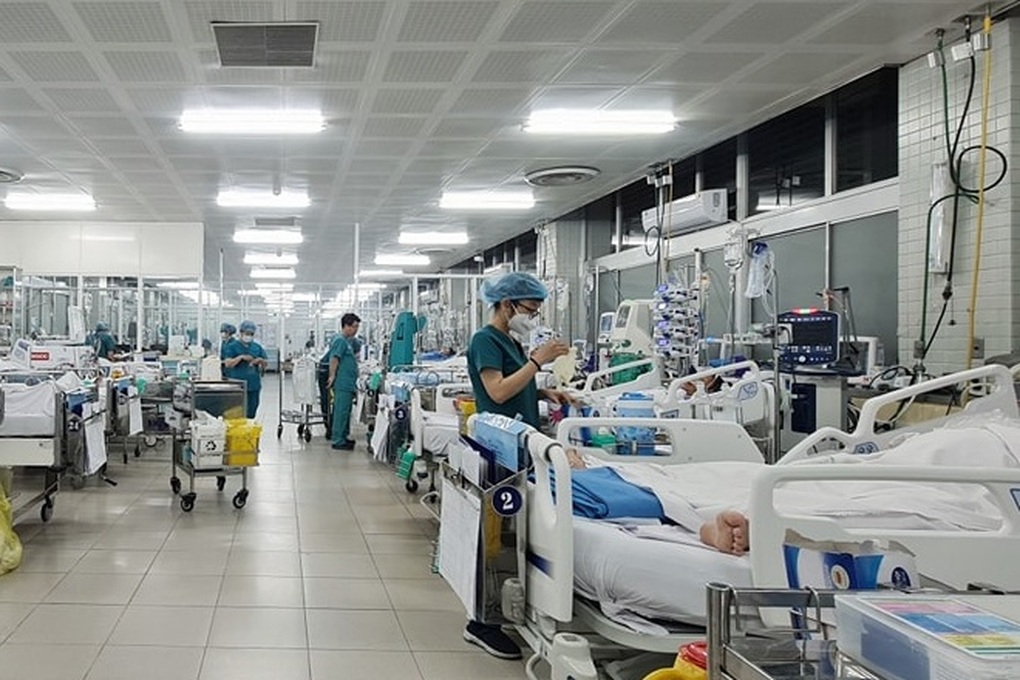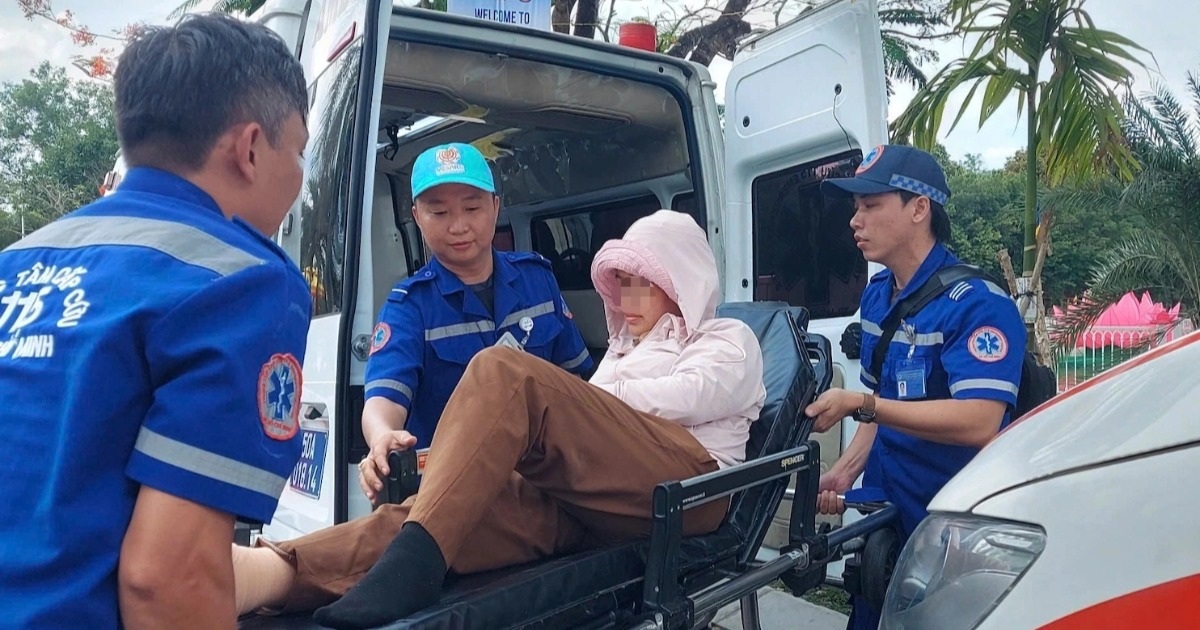At the annual scientific and technical conference of Cho Ray Hospital (Ho Chi Minh City), held on April 17th, Dr. Phùng Mạnh Thắng, Head of the Infection Control Department, presented a report on the importance and implementation steps for detecting, investigating, and controlling infectious diseases in healthcare facilities.
The report noted an increasing risk of emerging and re-emerging infectious diseases in healthcare settings following the COVID-19 pandemic and the current situation.
Dr. Thắng cited two incidents. Firstly, a cluster of 13 respiratory infection cases occurred at Cho Ray Hospital previously, affecting 11 wards.
Immediately after detection, Cho Ray Hospital implemented preventive measures, including the influenza vaccination of over 2,300 medical staff in the face of crowded conditions and serious illnesses. This successfully contained the situation within 5 days.

A treatment ward at Cho Ray Hospital (Photo: Hospital).
Secondly, a fungal infection outbreak occurred at the neonatal intensive care unit (NICU) of a hospital in Ho Chi Minh City in 2024.
A total of 33 out of 35 patients (over 94%) in the NICU contracted *Candida* fungus (*Candida auris* in the first case and *Candida haemulonii* in subsequent cases). Most patients were premature and seriously ill. Eleven patients (33% of the infected) unfortunately died.
Following the outbreak, the NICU was temporarily closed. Cho Ray Hospital and other medical facilities assisted the affected hospital in controlling the infection. After 36 days of intervention, no new cases of fungal infection emerged.
Dr. Thắng stated that Cho Ray Hospital has developed guidelines on identifying and preventing potential disease outbreaks and antimicrobial resistance in healthcare facilities.
The guidelines outline 11 key steps for responding to potential outbreaks in healthcare settings: 1. Confirming the diagnosis and identifying the source of infection; 2. Notifying relevant stakeholders; 3. Defining a case definition; 4. Identifying cases and gathering information; 5. Analyzing epidemiological characteristics of cases; 6. Evaluating patient care practices; 7. Formulating hypotheses; 8. Testing hypotheses; 9. Collecting and testing environmental samples; 10. Implementing control measures; 11. Reporting the results.
"Improving medical staff's knowledge of disease detection, investigation, and control is crucial for timely disease management and combating antimicrobial resistance," the report concluded.
In his opening remarks, Dr. Nguyễn Tri Thức, Deputy Minister of Health and Director of Cho Ray Hospital, noted that this year's annual scientific conference featured a total of 446 scientific presentations, a significant increase of nearly 150 compared to last year.
The conference attracted a large number of researchers and colleagues from various countries, including the USA, Japan, China, Australia, Taiwan, and Cambodia.

Dr. Nguyễn Tri Thức, Deputy Minister of Health (Photo: Hospital).
The Deputy Minister urged the conference to demonstrate greater innovation in presentation formats and content, emphasizing the application of information technology and digital transformation in scientific research and presentation methods, to maximize benefits for attendees. He also encouraged doctors and researchers to focus on up-to-date research on advancements, new technologies, and cutting-edge techniques in various medical specialities, particularly on AI applications in diagnostics and treatment, ultimately enhancing patient care quality, safety, and satisfaction.



